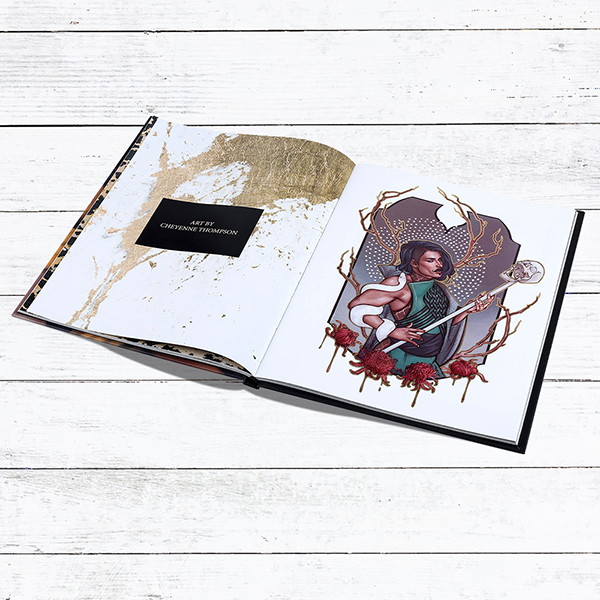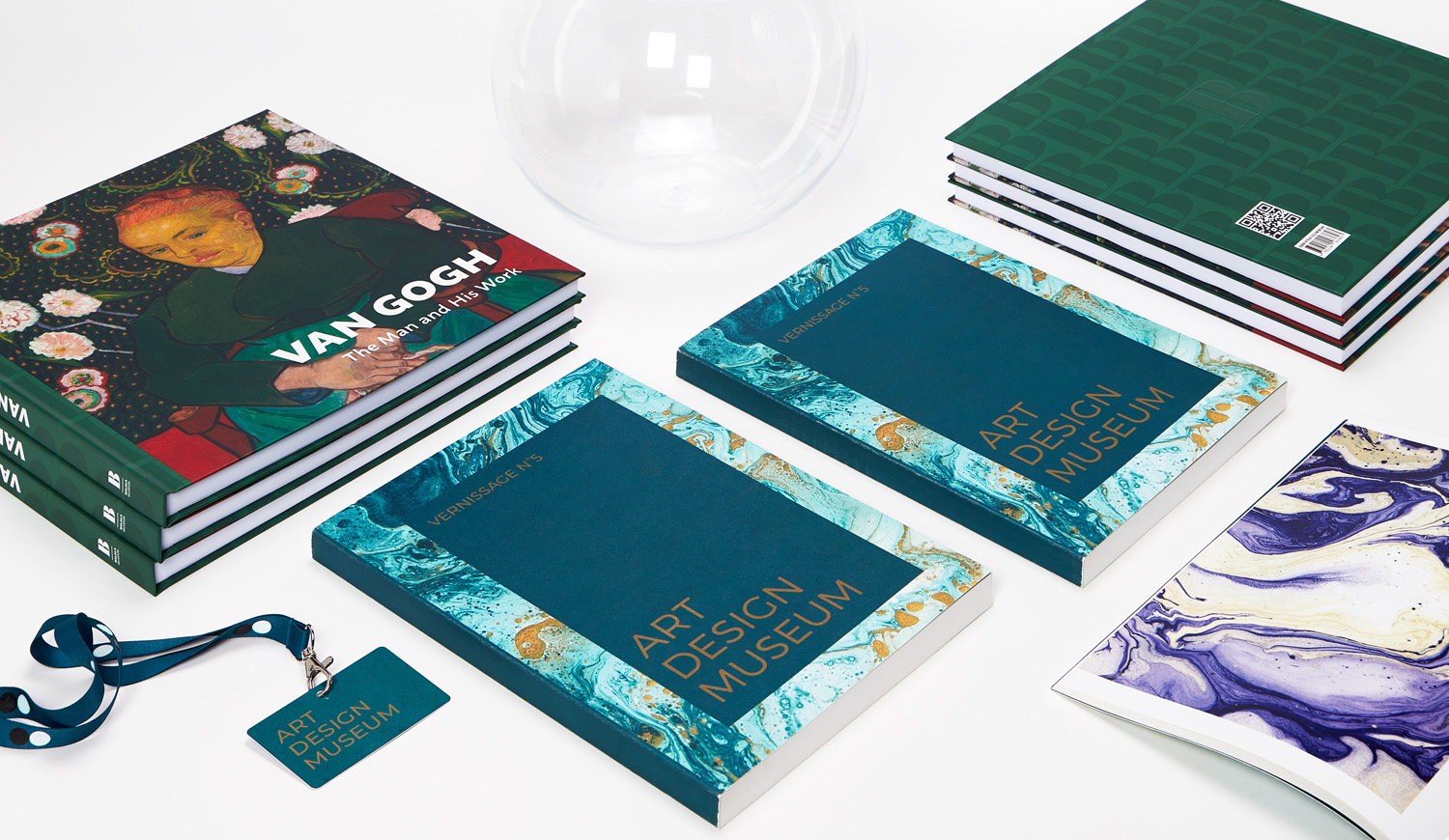Essential Prepress Tips for Flawless art book Printing
Essential Prepress Tips for Flawless art book Printing
Blog Article
Discover the Vital Guide to Art Book Printing for Aspiring Artists and Publishers
As an ambitious musician or publisher, understanding the nuances of art book printing is vital to bringing your vision to life. What are the essential components you should focus on to produce a sensational art book that genuinely represents your job?
Understanding Different Sorts Of Art Books
When you plunge into the world of art publications, you'll promptly find that they come in various kinds, each tailored to various creative expressions and target markets. Coffee table publications usually showcase magnificent visuals, perfect for casual browsing, while essays dive deep into an individual musician's work, offering context and insights. If you're interested in specific art activities, exhibit brochures use detailed documents of shows, including essays and critiques.
For instructional functions, art manuals and technique publications guide you through various mediums and designs, making them necessary for aiming artists. Each layout serves its objective, and knowing their differences can boost your art book journey.
Choosing the Right Paper and Products
Selecting the right paper and materials can substantially affect the total quality and feel of your art book. Start by thinking about the kind of art work you have. For lively shades and intricate information, go with a shiny finish or a heavyweight matte paper that improves aesthetic deepness. If your job includes softer tones or structures, an all-natural or uncoated paper can give a cozy, inviting touch.
Think regarding the weight of the paper, also. Thicker options frequently offer an even more expert look, while lighter papers can lower printing expenses. Do not fail to remember concerning the binding products; a strong cover can safeguard your pages and include in the book's aesthetic.
Lastly, think about sustainability. Environment-friendly alternatives are getting appeal and can mirror your worths as a musician. By carefully selecting your paper and products, you'll assure that your art book not only looks wonderful yet likewise really feels unique in the hands of your visitors.

Selecting the Ideal Printing Techniques
When it involves printing your art book, choosing between offset and digital printing can considerably affect your end product. You'll likewise want to consider how paper high quality affects the total feel and look of your art work. Allow's discover these crucial printing techniques to find the ideal suitable for your task.
Balanced Out vs. Digital Printing
While both countered and digital printing have their benefits, choosing the appropriate strategy for your art book can greatly impact the final item. Offset printing supplies top quality images and dynamic shades, making it ideal for larger print runs. If you're wanting to create hundreds or hundreds of duplicates, balance out will certainly give you constant results and lower per-unit prices. On the other hand, digital printing excels for smaller amounts and quicker turn-around times. It enables very easy modification, allowing you to publish distinct duplicates without added arrangement expenses. Consider your spending plan, timeline, and the volume of your job. Eventually, your option should straighten with your artistic vision and distribution technique, guaranteeing that your art book reflects the high quality you prefer.
Paper Top Quality Factors To Consider
Picking the appropriate paper top quality can significantly enhance the aesthetic allure and responsive experience of your art book. For prints, a glossy coating can make images pop, while a matte coating gives a softer, much more subtle appearance.
Following, think of the sustainability of your option. Eco-friendly alternatives are coming to be significantly popular and can attract environmentally-conscious readers. Demand examples to see just how various papers function with your artwork, ensuring the final item shows your vision flawlessly.
Making Sure Shade Accuracy in Your Prints
To attain stunning prints, you require to concentrate on color precision from the beginning. You'll intend to use shade calibration strategies to verify your screen and printer are in sync. In addition, proofing your job prior to the last print run can aid catch any type of disparities, ensuring your art looks equally as you visualized.
Color Calibration Techniques
Ensuring color precision in your prints starts with effective color calibration methods that assist preserve consistency between your electronic images and final printed items. Initially, calibrate your screen using hardware calibration tools to accomplish the most effective shade representation. This confirms that what you see on-screen matches what gets printed. Next, choose a shade account fit for your printing process, like CMYK for print products. On a regular basis check your printer's setups and maintain it to avoid color shifts. It's likewise important to make use of top quality paper that matches your inks, as different surface areas can substantially influence color output. By regularly applying these methods, you'll improve the total high quality of your art prints and much better share your imaginative vision.
Proofing for Precision
While you might believe your electronic pictures are prepared for print, proofing is crucial for achieving shade precision. Prior to committing to a complete print run, constantly request a proof from your printer. This enables you to see just how colors equate from screen to paper. Contrast the evidence with your adjusted monitor to detect any kind of click this link disparities. Take note of saturation, illumination, and color, as these factors can drastically influence your end product.
If changes are needed, connect clearly with your printer concerning your wanted end results. Don't hesitate to request visit the site numerous evidence if essential; it deserves the financial investment to get it right. Ultimately, thorough proofing assurances that your artwork is represented as you envisioned it, keeping your creative honesty throughout the printing process.

Creating Layouts That Enhance Your Artwork
When you create layouts for your art book, it's vital to consider exactly how each aspect engages with your artwork. Go for a balance between visuals and text, making certain neither overshadows the various other. Usage white room tactically; it gives your art work room to take a breath and accentuates its details.
Think about the flow of your book. Arrange images in a manner that overviews the viewers's eye, developing a narrative or thematic progression. art book. Vary the dimensions and positionings of your artwork to keep the layout vibrant and fascinating
Select font styles that match your art work without distracting from it. Keep message concise and relevant, giving context or insight that improves the viewer's experience.
Finally, examination different formats. Publish samples to see just how the styles equate on paper, and change as needed. By thoughtfully making your designs, you'll create a visually interesting art book that reverberates with your target market.
Binding Alternatives for a Professional Complete
Picking the right binding option can greatly impact the overall discussion of your art book. You'll want to consider both aesthetic appeals and longevity when making your option. Popular alternatives include best binding, which offers a smooth look and is perfect for thicker publications; saddle stitching, perfect for smaller sized booklets; and spiral binding, which allows web pages to lay level for simple check my reference watching.
If you're going for a premium feeling, instance binding is an exceptional option, supplying a tough cover and a professional look (art book). Don't fail to remember concerning the cover material; choices like cloth, leather, or a glossy coating can boost your book's charm
Whatever alternative you select, make certain it complements your artwork and improves the visitor's experience. Take your time to evaluate the advantages and disadvantages of each approach, so your end product shows the top quality of your creative vision.
Preparing Your Files for Print Preparedness
To guarantee your art book is print-ready, you'll require to pay close attention to file prep work. Start by establishing your file size to match your desired print measurements. Use high-resolution pictures-- 300 DPI is the criterion-- to establish sharp, vibrant visuals. Transform your data to CMYK mode, as this shade space is best for printing. Do not forget to consist of hemorrhage locations, normally an additional 0.125 inches around your web pages, to avoid any white sides after cutting.
Additionally, install your fonts or convert message to lays out to stay clear of any font style issues. Conserve your work in a PDF layout, as this is one of the most accepted file type for printers. Verify your documents for any typos or design mistakes, as adjustments can be expensive after the fact. Think about producing a proof to review prior to the final print run. Complying with these actions will help you accomplish a refined, expert art book.
Frequently Asked Inquiries
What Is the Ordinary Expense of Publishing an Art Book?
The standard expense of publishing an art book differs, yet you can anticipate to pay anywhere from $5 to $20 per copy, relying on variables like size, paper quality, and printing volume.
How Can I Discover a Reliable Printing Firm?
To locate a trusted printing firm, begin by investigating on the internet reviews and asking other musicians for suggestions. Compare quotes, check portfolios, and interact your requirements plainly to ensure they comprehend your vision and quality expectations.
What Is the Typical Turnaround Time for Printing?
The normal turnaround time for printing differs but generally varies from one to 4 weeks. Variables like task intricacy and volume can impact this. Always validate with your chosen printer for specific timelines and assumptions.
Can I Publish My Art Book in Limited Quantities?
Yes, you can definitely print your art book in limited amounts. Many printing companies offer short-run alternatives, permitting you to generate simply the number you need, making it much easier to manage prices and inventory.
What Legal Factors To Consider Should I Know for My Art Book?
You must think about copyright, licensing arrangements, and design launches when producing your art book. Make sure you have the right to use all photos and message, safeguarding on your own from possible legal concerns in the future.
Report this page